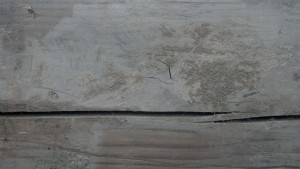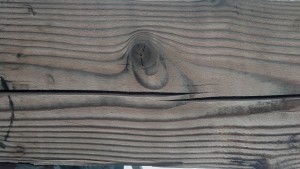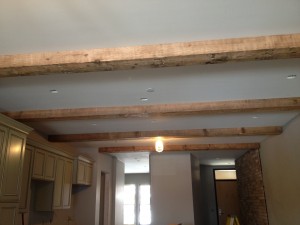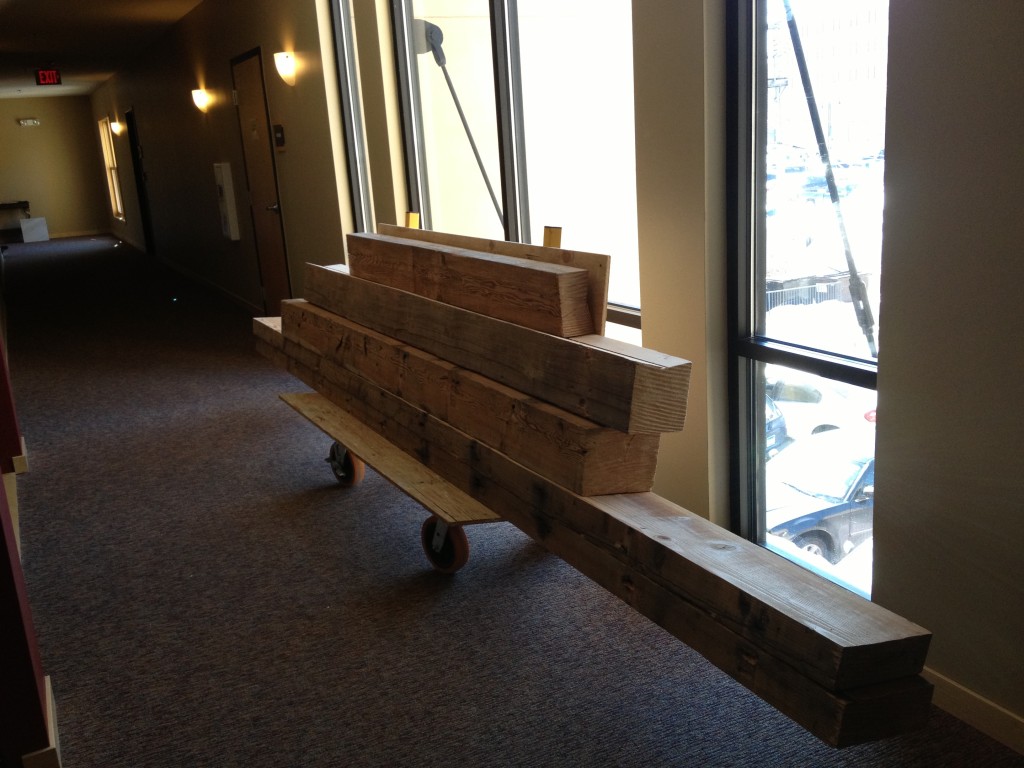March 25, 2013
Beam me up: Historic, reclaimed timbers add charm to 300 Broadway condos
Every day, Bryan Bienek has a blast at work.
Literally.
Bienek is a project manager at
Morris Painting and Decorating in Fargo, where he and his staff use everything from sand to baking soda to blast the dirt, paint and goo off various surfaces.
Now you’l find Bienek’s handiwork in two new condos currently under construction at 300 Broadway. These spaces contain historic, reclaimed timbers that were “dry-ice blasted” by Bienek’s crew.
That’s right. They used the stuff we usually plunk in our Halloween punch to clean the old Douglas fir support beams now prominently displayed in two units at 300 Broadway. Dry-ice blasting is a kinder, gentler way to clean surfaces, as it won’t abrade the surface of the item you’re trying to restore, Bienek says.
Kilbourne Group acquired the beams through Lynn Fundingsland of the Fargo Housing and Redevelopment Authority. Fundingsland says the timbers were salvaged during the 2008 demolition of the old Cooper Tire Warehouse at 11th Street and Fourth Avenue North in Fargo. (The former site of the warehouse is now home to Fargo Food Pantry and Cooper House, a building that provides permanent supportive housing for people who are coming out of homelessness.)
Fundingsland said the original plan was to possibly incorporate the timbers into the barrel-roofed food pantry, but when that plan changed, he sent out emails to local architects and developers to see if they had an interest in the sturdy beams.
KG General Manager Mike Allmendinger volunteered to take the timbers. After a few years in storage, the beams were recently brought to Morris Painting and Decorating to be cleaned.
Unlike sandblasting, which uses an abrasive material and pressurized air stream to literally grind goo off an object, dry-ice blasting is considered a non-abrasive method. The dry-ice consists of food-grade carbon dioxide which is compressed until it turns solid and reaches temperatures of 110 degrees below zero, Bienek says. (Holy frostbite, Batman!)
The dry-ice is then used in one of two ways. It’s either turned into BB-sized pellets or shaved off of giant chunks of ice to form pieces as fine as granulated sugar. The sugary stuff will produce a smoother, more even type of surface, and was exactly what was used to clean the beams for the 300 project, Bienek says.

before blasting

after blasting
Dry-ice blasting also uses a different method to clean gunk off objects. It works by instantaneously freezing the goo or grime on the surface. The dirt or coating retracts, loosening its adhesive on the substrate. And when the ice particle hits the wood or metal underneath, it creates a tiny concussion blast, which Bienek calls sublimination, that rips the debris off the surface.
For this particular job, the dry ice helped remove plaster, cement, tar, oil and decades of grime.
As dry ice is softer and less abrasive than sand, it can even be used for jobs as delicate as cleaning smoke damage off antique books. Another advantage to ice-blasting is that it leaves behind little secondary waste, which makes it cleaner and more environmentally friendly than blasting with a gritty media like sand.
The timbers are just one example of the history-rich details inside the newest 300 Broadway condos. Two other units, one on the second floor and another on the third, will also feature refinished, sliding fire doors from the old Pierce Printing plant in downtown Fargo.

